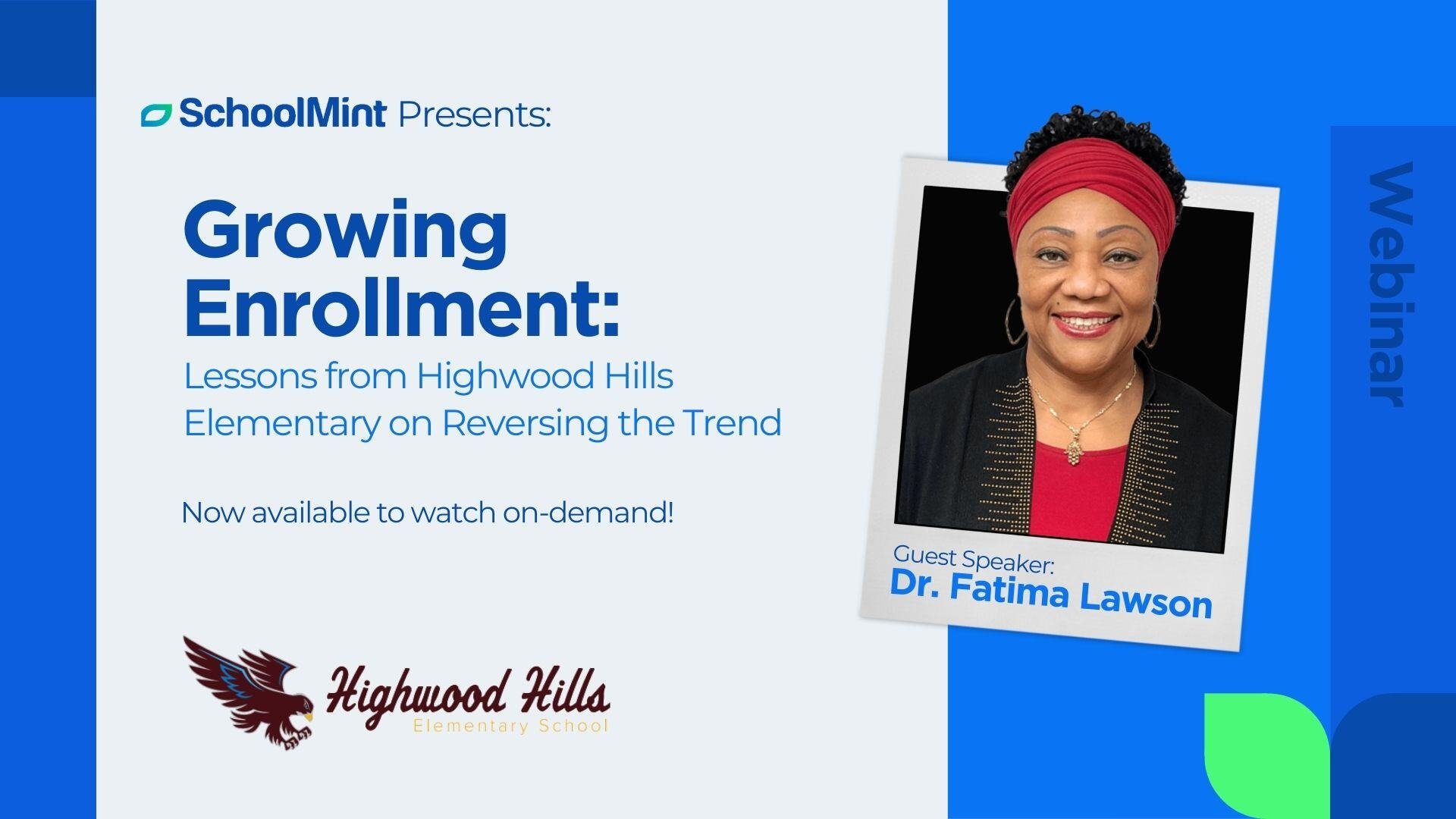Why Your School Needs a Principal’s Blog
Here are 6 things to keep in mind to create an effective school principal blog.
Blogging is not just an exercise in vanity. It can also be an incredibly effective avenue of communication between a school’s administration and parents, guardians, and students.
The creative freedom inherent in blogging can facilitate a deeper connection with families, who often want to know just as much about the school as they do about the person running it.
Unlike newsletters, events, social media, and other communication tools at your school’s disposal, a blog offers a chance to share your philosophical approach to running a school and to reinforce your school’s core ideals and values.
For potential families, running a frequently updated and SEO-optimized blog improves your school’s search engine rankings. It also gives prospective families deeper insight into the school and why they should enroll with you.
- Get some ideas for a school blog here: 20 Ideas for a School Blog
Here is some guidance on how to use a principal’s blog at your school.
1. Be Transparent
Sending a child to school means sending them into an environment parents can’t control, and keeping these parents in the dark only breeds anxiety.
They don’t just want a report on student performance or a list of staff credentials; they want an in-depth discussion about the quality of the teaching staff, the reasons students are performing the way they are, and what the principal thinks about it all.

The blogging platform is a perfect medium for parting the curtain and giving families a peek inside the inner workings of your institution. It also makes for a more engaging read than simply sending out a budget outline or datasheet.
A principal’s blog is your opportunity to put things into context and make important information understandable and relevant. For example:
- How will this new staff member contribute to the school’s environment?
- What does this new policy mean for a student’s routine?
To see transparency in action, take a glance at this post by Ms. Titia Kipp, the principal at Chicago’s Waters Elementary School, where she recaps a concerning event at school and explains what the school did.
2. Be Human
To make your parents happy while attracting new ones, it’s important to put a face — and a voice — to what can often seem like an education machine run by a bunch of faceless cogs.
A principal’s blog helps humanize the administration.
It’s an opportunity to tell stories and share goals, challenges, and hopes.
Suddenly, the principal is no longer some enigmatic figure making rulings from their office throne room. Instead, they’re a multi-dimensional person who puts a lot of thought and care into the decisions they make and the work they do.

To get a better idea of how this concept works in practice, read any blog post of Dennis Schug, principal of Hampton Bays Middle School in New York.
For example, he begins one of his posts with an ode to Cheers, then segues into an essay on the importance of remembering student names:
“Norm was greeted, by name, and routinely so. Welcomed into a familiar community — his community — that allowed him to be comfortable in his own skin … What does this have to do with being a school leader, an educator, or someone fortunate to work with and for children? Now more than ever, we need to commit to the small things. For example, what if we made the use of names one of our norms?”
If one of the core attributes of your school is a “warm and caring environment,” what better way to demonstrate it than by using a blog to show all the things you do to foster this?
3. Be Inclusive
Sometimes, the only opportunity for a parent to interact with their child’s school are parent–teacher conferences or fundraisers. While this might be enough for some, others may want a little more.
A principal’s blog is the perfect solution.
A simple photo of students engaging in an activity can make the difference between a parent feeling left out and feeling included. A short video can make families feel like they are part of the school community.

Although he has since ceased blog updates, elementary school principal Matt Renwick of Mineral Point, Wisconsin, understands this concept well.
If you look at older posts, you’ll see how Renwick made a conscious effort to Tweet photos of his school’s daily happenings. He would share many of these Tweets on his blog, expounding on the moment and why it was important.
Twitter and other social media platforms are fine for quick pictures or videos, but a blog is perfect for explaining the context and why of things that happen at your school.
4. Reinforce Values
Many schools are built upon a foundation of strong moral values. A school’s value system can be a deciding factor in enrollment. Writing a principal’s blog allows your administration to continuously reinforce their values and show them being implemented.
It’s also an opportunity for a principal to get personal, showcasing how their value system influences that of their institution. A piece on a principal’s own family, for instance, can say just as much about their family’s moral code as it does about the school’s.
For a great illustration of value reinforcement, check out this blog post by Meadow Brook Elementary principal Seth Berg.
Here, Seth contemplates a moment when his own children learned the value of mistakes. “Parents and educators, let’s let them fail,” he writes. “Let’s embrace it. Let’s let them fight through frustration and into learning and growth.”
6. Reflect
Running a principal’s blog benefits more than just your families — it also greatly benefits you, the writer.
Schools are all hustle and bustle. It’s a busy environment where every decision is an important one because every decision affects the well-being of the children under your care.
In such a fast-paced, high-stress environment, there isn’t a whole lot of time to sit down and reflect. But taking the time to write a blog post allows you to process that day’s insanity, make sense of it, and ultimately learn from it.

A principal’s blog helps you make better decisions and communicate more clearly. It takes all the complex miscellany of the day and distills it into something you can take with you.
Jen Schwanke, a former principal and current deputy superintendent for the Dublin City School District in Dublin, Ohio, used her blog, The Principal Talks, to both share her thoughts with her community and reflect on her own journey.
In one post, she recaps her time at a professional conference before concluding with bullet points of what she learned and what was still on her mind.
“I walked away filled with things to think about,” she writes. “I was overcome with the wisdom of so many educators and presenters. As always, I was feeling, somehow, as if I were a more complete teacher, leader, thinker, and principal.”
She even took away a bit of wisdom that applies to the blog post you’re reading right now: “We shouldn’t use writing to record thoughts; we should use it to inspire thoughts.”
If you want to learn more about how a school blog can support your marketing efforts, reach out to our marketing services team!
Share this
You May Also Like
These Related Stories

How Principals Can Support First-Year Teachers

Growing Enrollment: Lessons from Highwood Hills Elementary on Reversing the Trend



